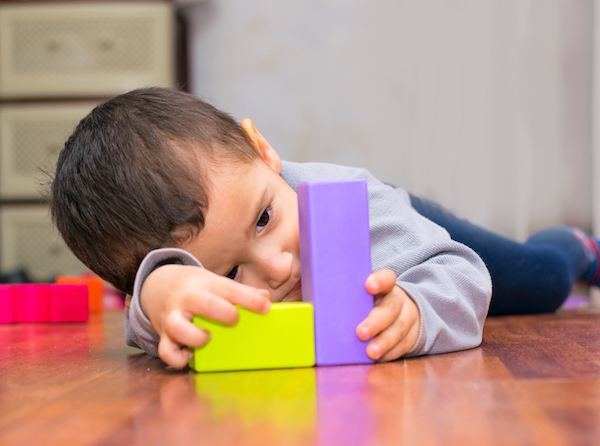Building Bridges to Kindergarten Readiness
Explore Bridges and Block Play to Build Key Readiness Skills

In preschool, we encourage children to see themselves as problem solvers and to develop confidence and independence. While these are complex cognitive and social-emotional skills, children actually learn them from playing. In fact, children learn best through play.
Share the following STEM building activity with families so they can guide their children to play and develop important kindergarten-readiness skills.
Block Play Building Activity for Families
Play is serious work. What seems like a simple yet fun building block game is actually an opportunity for your child to develop key cognitive skills such as problem solving and social- emotional skills such as confidence and independence.
Guide your child to explore construction challenges, think flexibly, and discover new uses for objects and materials.- Gather materials. Find several household materials your child could safely and stably stack several inches high: blocks, books, boxes, or even canned goods. Also gather several items, some good and some not good, for making a stable bridge between the two stacks: paper, fabric, sturdy cardboard, flat wood, hard plastic, etc.
- Invite your child to stack! Ask your child to make two stacks with the stacking materials (blocks, books, boxes, canned goods). Have your child make the stacks the same height, about one foot apart.
- Introduce the bridge. Encourage your child to figure out how to make a bridge from one stack to the other using one of the materials you have gathered (paper, fabric, cardboard, wood, plastic, etc.).
- Build complexity. Challenge your child to make a sturdy bridge that will allow him to push a toy car across the bridge without it collapsing.
- Make predictions. Ask your child to predict which materials will make a good bridge and describe why.
- Test the options. Invite your child to test the different bridge materials. If the bridge collapses, encourage him to brainstorm solutions. For example, you could encourage your child to use a thicker or stiffer material for the bridge, to move the two stacks closer together, to place another stack in between the other two stacks for support, or to use a lighter toy car to cross the bridge.



